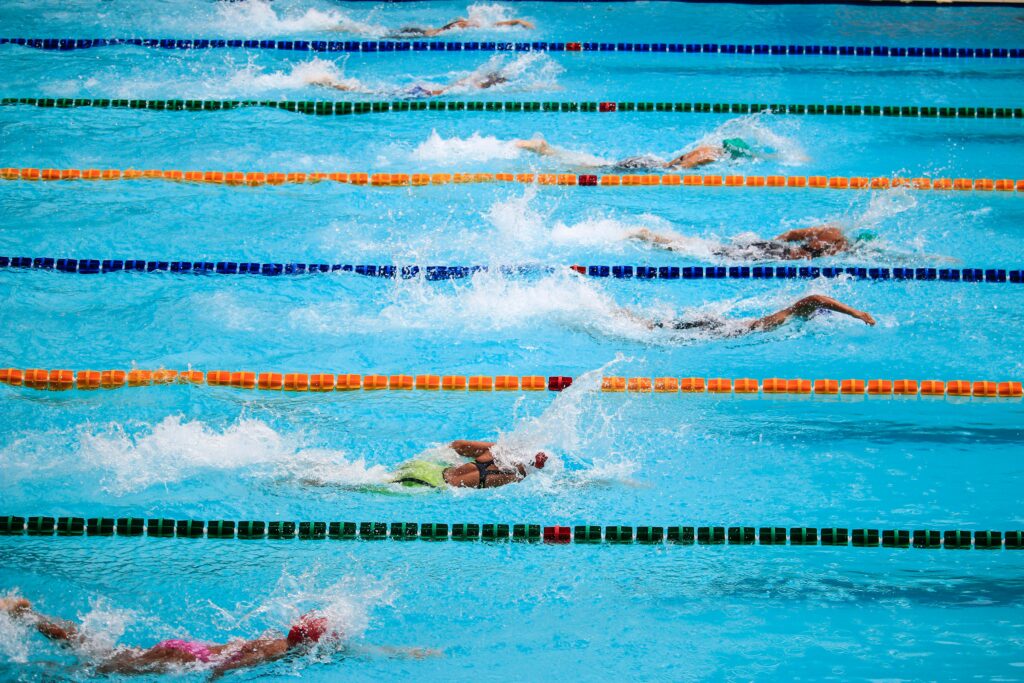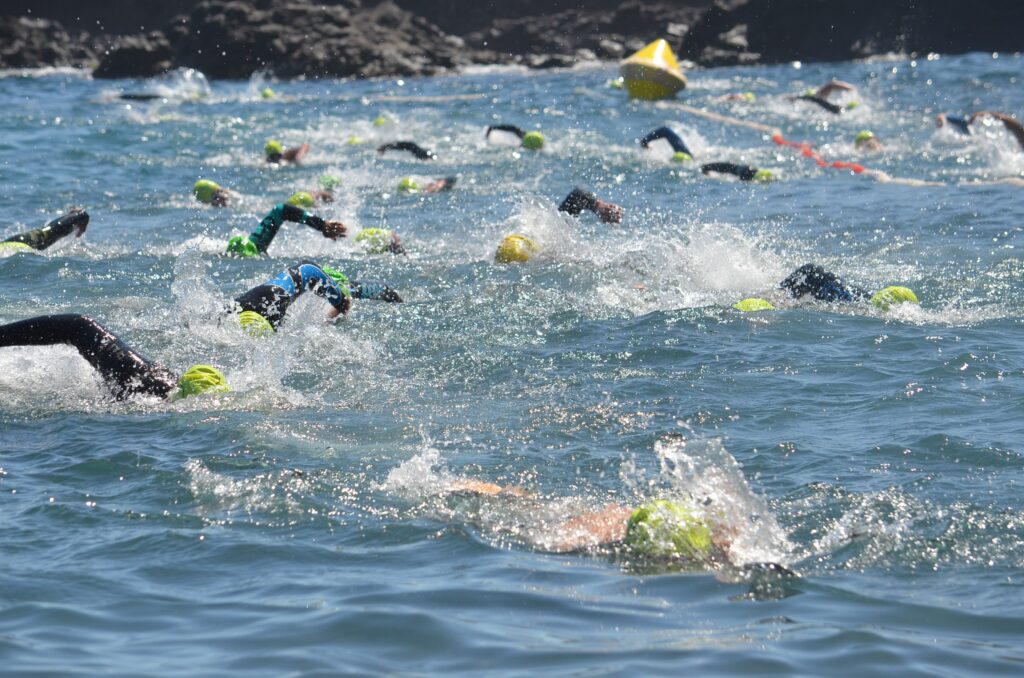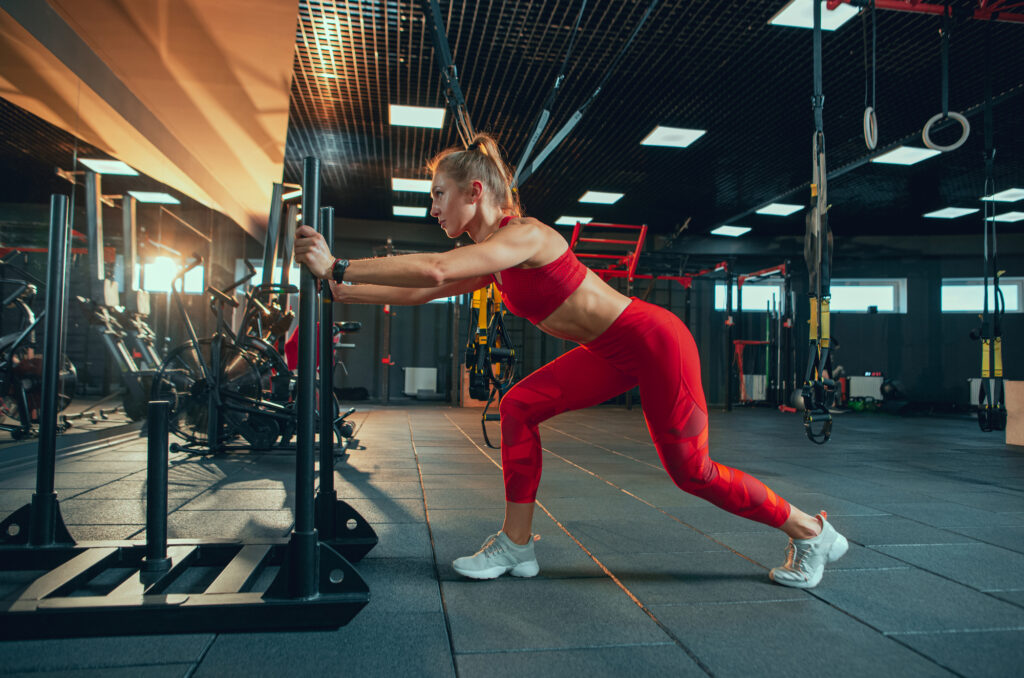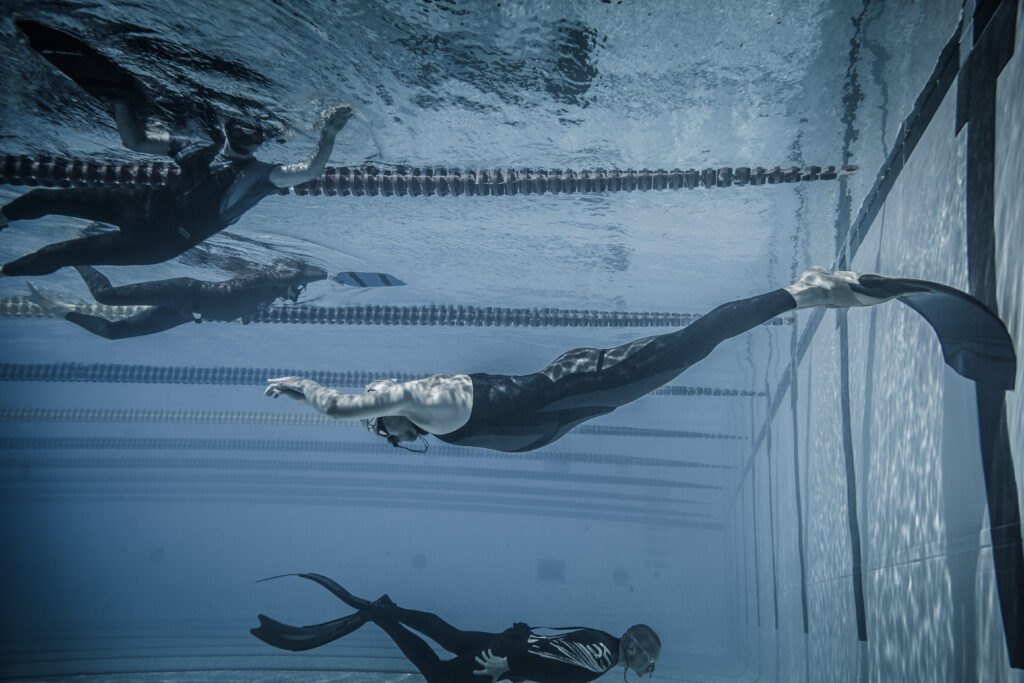The 100-metre backstroke demands a perfect blend of technical precision, strategic pacing, and explosive underwater skills. Many swimmers struggle to break through their time barriers because they focus solely on stroke technique whilst neglecting the crucial elements of race strategy and underwater dolphin kick development.
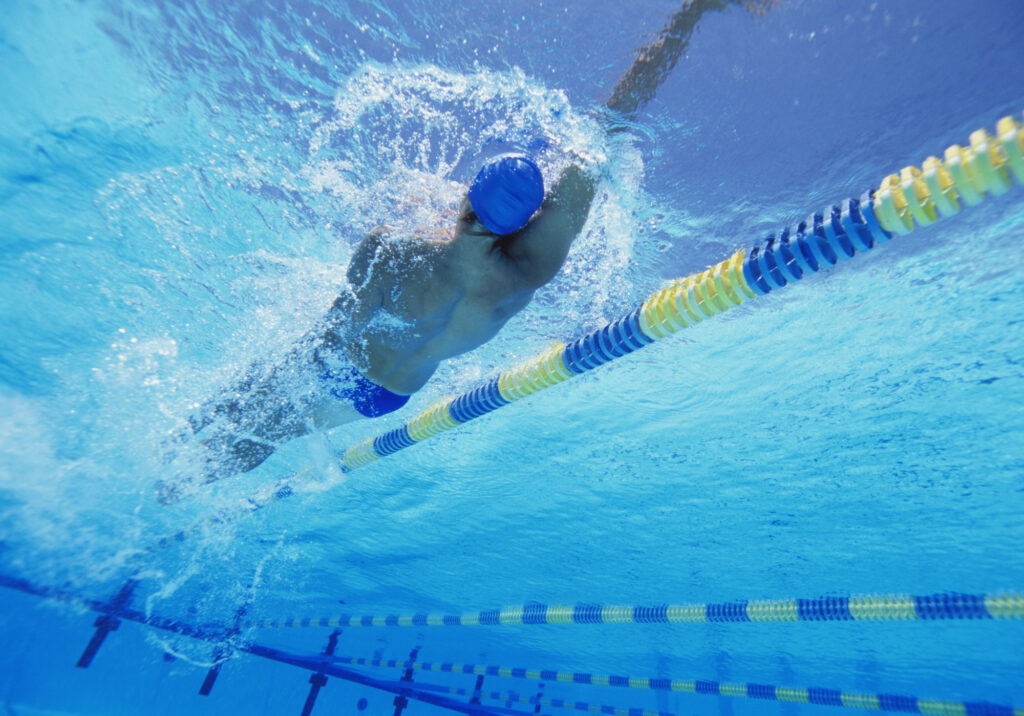
Improving 100m backstroke times requires mastering three core areas: optimising stroke mechanics for efficiency, developing powerful underwater phases, and executing a strategic race plan that maintains tempo throughout all four lengths. The difference between a good backstroke swimmer and a fast one often lies in understanding how these elements work together during competition.
This comprehensive guide explores the essential techniques, training methods, and race strategies that elite backstrokers use to drop significant time in the 100 backstroke. From perfecting body position and stroke timing to mastering the underwater phases that can make or break a race, swimmers will discover practical methods to transform their backstroke performance.
Key Takeaways
- Perfect backstroke technique combined with strategic race pacing prevents the common mistake of going out too fast and fading in the final 50 metres
- Powerful underwater dolphin kick phases off each wall can significantly reduce race times as swimmers move fastest during streamlined underwater sections
- Focused training with tempo variation, specific drills, and equipment work builds the strength and muscle memory needed for consistent race-day performance
Key Principles of Backstroke for the 100m Race
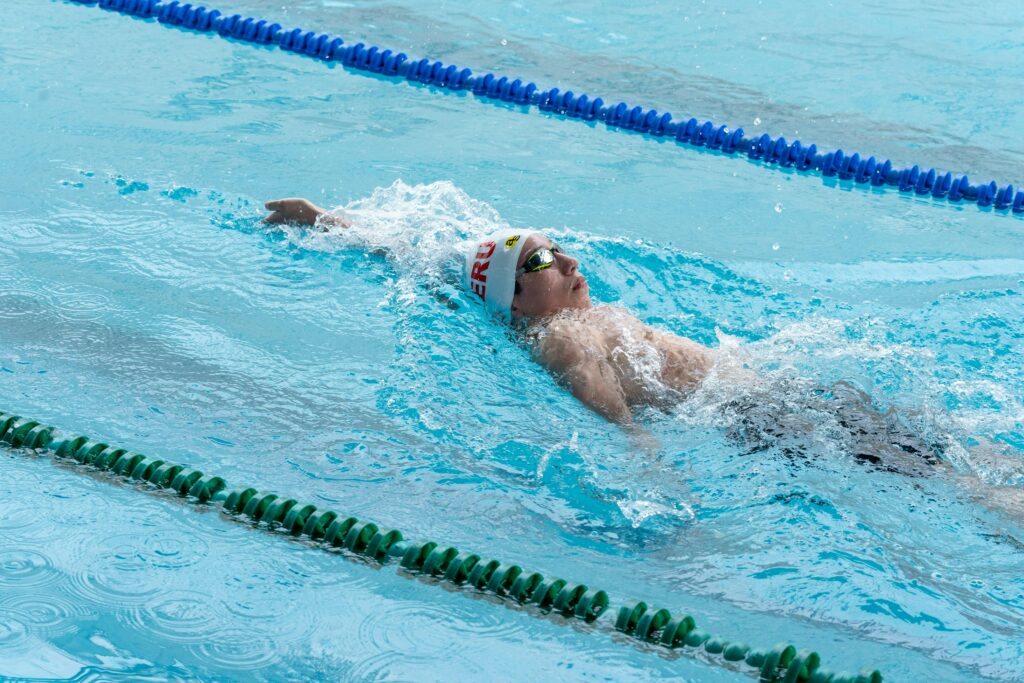
Success in the 100m backstroke depends on mastering proper body alignment, efficient stroke mechanics, and maintaining consistent speed throughout the race. These three elements work together to create the foundation for competitive backstroke swimming.
Fundamentals of Backstroke Technique
The backstroke technique involves four key components: body position, arms, kick, and breath. Each element must work seamlessly together for maximum efficiency.
Arm Movement Pattern:
- Entry occurs with the pinky finger first
- Arms rotate in opposite directions
- Pull phase engages the lats and core muscles
- Recovery happens straight up and over
The catch phase is crucial for generating power. Swimmers should bend their elbow underwater to grab more water with each stroke.
Kick Technique: The flutter kick provides stability and propulsion. Legs remain relatively straight with slight knee bend. The kick originates from the hips, not the knees.
Breathing Coordination: Unlike other strokes, breathing in backstroke is unrestricted. Swimmers can breathe continuously but should establish a rhythm that matches their stroke tempo.
Stroke Rate Importance: Most swimmers need a faster stroke rate for competitive backstroke. A tempo trainer helps develop the proper rhythm for racing.
Optimising Body Position in the Water
Proper body position reduces drag and maximises stroke efficiency in the 100m back. The swimmer’s body should maintain a streamlined position throughout the race.
Head Position:
- Eyes look straight up toward the ceiling
- Ears remain underwater
- Neck stays neutral, not tilted forward or back
- Water line sits at the hairline
Hip Position: Hips float high near the surface. Core engagement prevents the hips from sinking, which creates drag and slows forward progress.
Shoulder Alignment: Shoulders rotate with each stroke but remain level. One shoulder lifts slightly during the catch whilst the other drives the recovery phase.
Body Roll: Controlled rotation around the long axis improves stroke power. The body rolls approximately 30-45 degrees to each side with each stroke cycle.
Streamline Position: Off each wall, swimmers maintain tight streamline position. Arms extend overhead with hands stacked, head between the arms, and body perfectly straight.
Understanding the Importance of Backstroke Speed
Backstroke speed in the 100m race requires balancing technique with tempo throughout four distinct 25-metre segments. Swimming faster backstroke balances technique, speed and power with strategic pacing.
Race Pacing Strategy:
- 1st 25m: Smooth sailing with controlled tempo
- 2nd 25m: Gradually increase stroke rate
- 3rd 25m: Maintain tempo with strong underwaters
- 4th 25m: Maximum effort with technique focus
Split Time Management: The difference between first 50m and second 50m splits should not exceed 2-3 seconds. Larger gaps indicate poor pacing strategy.
Underwater Speed: Dolphin kick off each wall provides the fastest speed in backstroke. Swimmers should practise consistent kick counts to build race rhythm and breath control.
Tempo Training: Regular tempo work develops the ability to maintain stroke rate under fatigue. Higher stroke rates generally produce faster times when combined with proper technique.
Backstroke Technique Optimisation
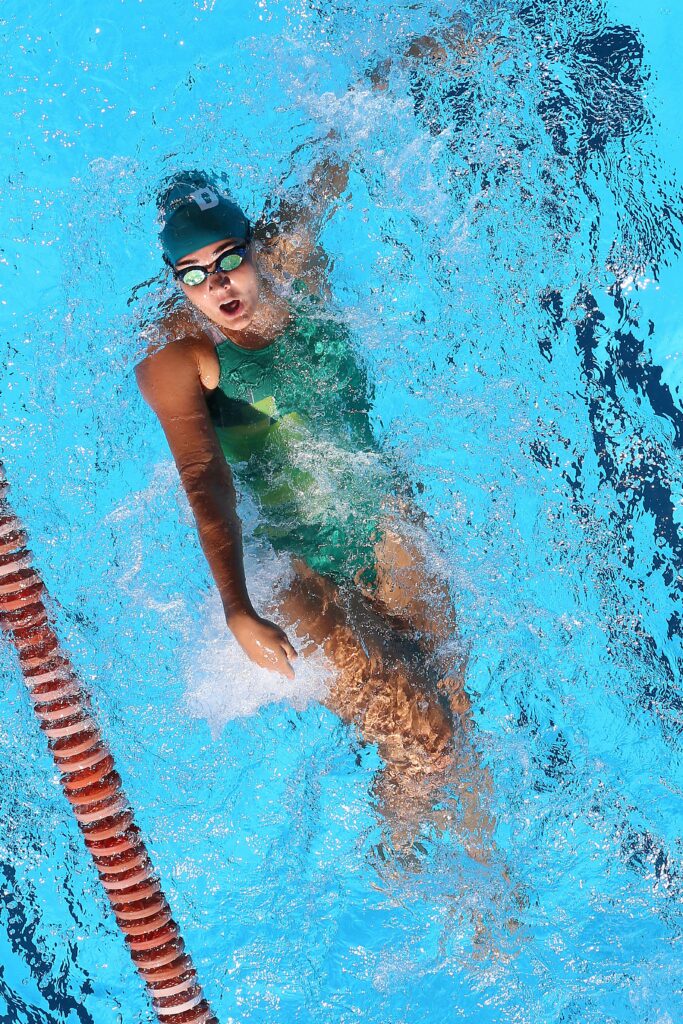
Perfect backstroke technique requires precise hand entry angles, continuous body rotation, and minimal drag through proper streamlining. These three elements work together to maximise speed whilst maintaining efficiency throughout the 100m race.
Hand and Arm Mechanics
Proper hand entry sets the foundation for powerful backstroke technique. The hand should enter the water with the pinky finger first, directly in line with the shoulder.
Entry Position:
- Arm fully extended at shoulder width
- Slight outward rotation of the hand
- Clean entry without splash
The catch phase determines stroke power. Swimmers must bend the elbow to approximately 90 degrees whilst keeping the hand facing backwards. This creates maximum surface area against the water.
Pull Pattern:
- Early catch: Bend elbow immediately after entry
- Mid-pull: Maintain high elbow position
- Finish: Accelerate hand past the hip
The recovery phase should be smooth and relaxed. The arm travels in a straight line above the body, with the shoulder leading the movement. Stroke technique improvements focus heavily on maintaining consistent arm timing throughout the race.
Effective Shoulder and Hip Rotation
Body rotation generates power in backstroke swimming. Swimmers should rotate approximately 30-45 degrees on each side, engaging core muscles for stability.
Rotation Timing:
- Rotate as the recovering arm passes overhead
- Opposite shoulder drops slightly underwater
- Hips follow shoulder movement naturally
The rotation helps swimmers reach further during the catch phase. It also reduces shoulder strain by allowing natural joint movement. Poor rotation leads to flat swimming and decreased stroke length.
Key Points:
- Continuous movement: Never pause rotation
- Core engagement: Maintain tight abdominal muscles
- Rhythm: Match rotation to stroke tempo
Backstroke rotation drills like single-arm backstroke help swimmers develop proper timing. The rotation should feel natural and flowing, not forced or mechanical.
Streamlining and Reducing Drag
Head position directly affects body alignment in backstroke technique. The head should remain still with ears underwater and eyes looking straight up.
Proper Head Position:
- Water line at the ears
- Relaxed neck muscles
- Minimal head movement
Body position requires a slight downward angle from head to feet. The hips sit approximately 10-15 centimetres below the surface. This position reduces drag whilst maintaining effective kicking depth.
Streamline Elements:
- Tight core: Prevents body undulation
- High hips: Reduces frontal drag
- Straight spine: Maintains alignment
Perfect backstroke technique includes the cup drill for head stability. Swimmers balance a water-filled cup on their forehead whilst swimming to maintain proper alignment.
Reducing unnecessary movements improves efficiency. Swimmers should avoid excessive side-to-side motion and maintain consistent body width throughout the stroke cycle.
Mastering Underwater Kick and Breakouts
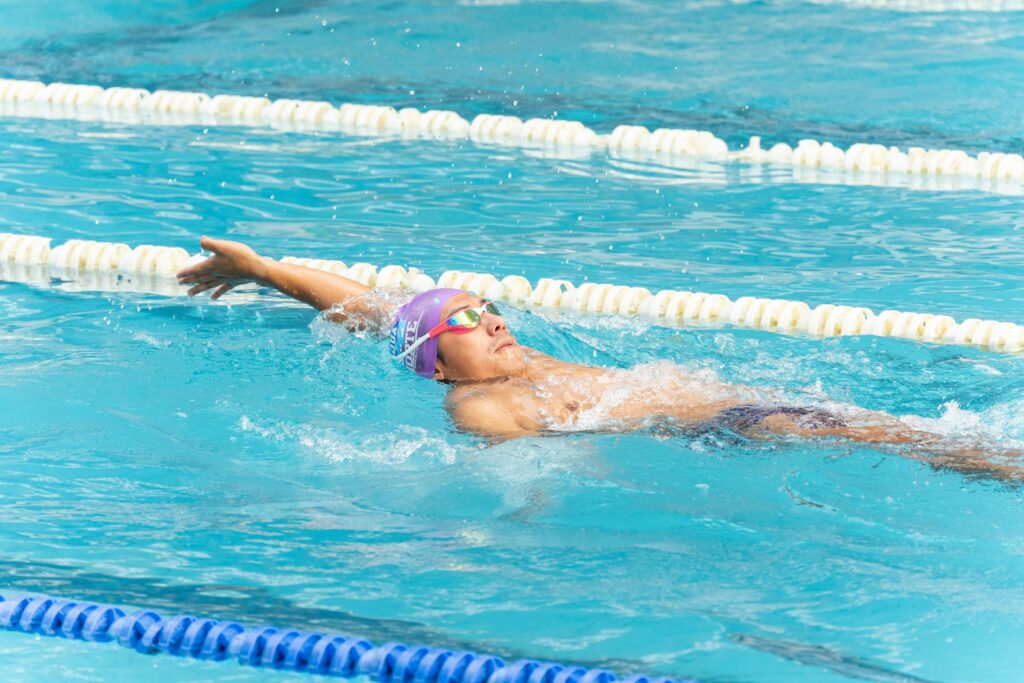
Strong underwater phases and smooth breakouts can make the difference between winning and losing in 100m backstroke. The underwater phase can be the fastest part of the race after the dive, making these skills essential for competitive success.
Streamlined Push-Offs and Dolphin Kicking
The swimmer must maintain a tight streamline position during push-offs to maximise speed. Arms should be locked overhead with hands overlapping, whilst the body remains straight from fingertips to toes.
Dolphin kicks begin immediately after the push-off. The motion starts from the core and flows through the hips to the feet. Each kick should create a wave-like movement through the entire body.
Key dolphin kick techniques:
- Keep kicks small and fast rather than large and slow
- Maintain consistent rhythm throughout the underwater phase
- Focus on generating power from the core muscles
- Keep the head in neutral position aligned with the spine
Race tempo dolphin kicking requires swimmers to match their kick tempo to race conditions. Swimmers should practise at maximum intensity to develop the proper rhythm for competition.
The underwater distance should be optimised based on individual ability. Most swimmers can maintain speed for 10-15 metres underwater before needing to surface.
Backstroke Breakout for Maximum Speed
The breakout determines how much underwater speed carries into the swimming stroke. Good breakouts maintain speed by creating a smooth transition from kicking to stroking.
Timing is critical for backstroke breakouts. Swimmers must surface at the optimal depth to avoid getting stuck too deep or breaking out too late at the surface.
The first stroke should be powerful and deliberate. The first stroke coupled with a dolphin kick is the strongest pull of any swimming race, making proper execution essential.
Breakout sequence:
- Final dolphin kick propels body toward surface
- One arm begins the first backstroke pull
- Head breaks the surface naturally
- Second arm follows immediately
- Transition to regular stroke rhythm
Core strength plays a vital role in breakout power. Swimmers need strong abdominal muscles to generate the force required for explosive breakouts.
Flutter Kick Timing and Technique
Flutter kick begins immediately after the breakout sequence. The kick should complement the arm stroke rhythm without creating drag or disrupting body position.
Backstroke sprinting requires high stroke rates and strong kicks to maintain speed throughout the race. The flutter kick provides continuous propulsion between arm strokes.
Kick timing follows a six-beat pattern in competitive backstroke. This means six kicks per complete arm cycle, with three kicks per arm stroke.
The kick originates from the hips rather than the knees. Legs should remain relatively straight with slight knee bend during the downward phase. Toes should be pointed and feet should stay underwater.
Flutter kick fundamentals:
- Depth: Kicks should stay within 30cm of the surface
- Width: Leg separation should not exceed 40cm
- Speed: Quick, compact kicks work better than slow, large ones
- Rhythm: Maintain consistent timing with arm strokes
Swimmers should avoid excessive knee bend or kicking too deep, as both create drag and reduce backstroke speed.
100m Backstroke Race Strategy and Phases
A successful 100m backstroke requires breaking the race into four distinct quarters, each with specific goals for tempo, technique, and energy management. Smart pacing and maintaining proper form under pressure separate good swimmers from great ones.
Segmented Approach: The Four Race Quarters
The 100 backstroke race strategy divides into four clear phases. Each 25-metre segment has unique objectives that build towards a strong finish.
First 25 metres: Focus on establishing smooth tempo and proper body position. Swimmers should avoid rushing their stroke rate and instead build a relaxed rhythm. Clean entry and exit from the water sets the foundation for the entire race.
Second 25 metres: Gradually increase intensity whilst maintaining stroke efficiency. This phase involves building speed without sacrificing technique. Swimmers begin to raise their stroke rate and power output.
Third 25 metres: Maximise underwater dolphin kicks after the turn. This segment often determines race outcomes as fatigue begins to set in. Strong underwaters can maintain backstroke speed when stroke efficiency starts to decline.
Final 25 metres: Hold technique under maximum fatigue. Many swimmers lose proper body position and stroke mechanics in this phase. Maintaining form whilst pushing through exhaustion separates competitive swimmers from recreational ones.
Establishing Rhythm and Pacing
Proper pacing prevents early burnout and ensures energy remains for the final sprint. Swimmers must resist the urge to go out too fast in the opening lengths.
The first 50 metres should feel controlled and sustainable. Stroke rate typically ranges from 28-32 strokes per minute for most competitive swimmers. Body position remains crucial with hips high and head stable.
Building intensity happens gradually through the second quarter. Swimmers increase their stroke rate by 2-4 beats per minute whilst maintaining distance per stroke. This approach preserves energy for the back half of the race.
Breathing patterns stay consistent throughout the opening 50 metres. Regular oxygen intake prevents early fatigue and maintains stroke rhythm. Swimmers should breathe every 2-3 strokes depending on their comfort level.
Maintaining Technique Under Fatigue
The final 50 metres test a swimmer’s ability to hold proper form under extreme fatigue. Technique breakdown costs more time than minor drops in power output.
Key technical points to maintain:
- Head position remains neutral with ears underwater
- Hips stay high near the surface
- Arm rotation maintains full range of motion
- Kick rhythm stays consistent
Swimmers often rush their stroke rate when tired, which reduces distance per stroke. Maintaining stroke length proves more effective than increasing turnover rate. Training volume and intensity help swimmers hold technique when fatigued.
Mental preparation helps swimmers push through the discomfort zone. Focusing on specific technique cues rather than pain or fatigue keeps the stroke efficient. The underwater phases become even more critical as stroke efficiency decreases.
Strong finishes require maintaining body position right to the wall. Many swimmers lift their head too early, causing their hips to drop and slowing their approach to the touch.
Essential Backstroke Drills and Exercises
Specific drills target the key technical elements that separate fast backstrokers from average swimmers. These exercises focus on arm timing, powerful kicks, and proper body rotation to build race-ready technique.
Single-Arm Backstroke for Timing
Single-arm backstroke drills help swimmers develop proper stroke timing and body rotation. The swimmer performs backstroke using only one arm whilst the other remains at their side.
Key Focus Points:
- Rotate fully to the pulling arm’s side
- Keep the stationary arm pressed against the body
- Maintain steady flutter kick throughout
- Time the catch to occur when rotation is complete
This drill teaches swimmers to connect their pull with body rotation. Many swimmers rush their stroke timing, which reduces power and efficiency.
Practice 25-metre repeats alternating arms every length. Focus on smooth rotation rather than speed during the learning phase.
The drill also improves balance on each side of the body. Swimmers often favour one side, creating uneven strokes that waste energy during races.
Kick Drills to Boost Propulsion
Flutter kick provides significant propulsion in backstroke racing. Strong kicks help maintain speed between strokes and support proper body position in the water.
Streamline Kick on Back builds underwater strength. Swimmers push off the wall in streamline position and kick on their back using only flutter kick.
- Start with 10-15 metres per push-off
- Keep arms locked overhead in streamline
- Maintain steady six-beat kick rhythm
- Progress distance as kick strength improves
Vertical kicking develops kick power without forward movement. Swimmers tread water using only flutter kick in deep water.
Hold this position for 30-60 seconds. Arms can be crossed over chest or held above water for added difficulty.
Kick with fins allows swimmers to focus on technique whilst building leg strength. The added propulsion helps maintain proper body position during longer kick sets.
Drills for Improving Balance and Rotation
Proper rotation drives backstroke speed whilst maintaining balance prevents energy waste. These drills address both elements simultaneously.
Three strokes plus 12 kicks teaches rotation timing. Swimmers take three full strokes, then kick for 12 beats whilst maintaining body position.
During the kicking phase, focus on staying balanced without rolling side to side. This builds core stability needed for consistent stroke technique.
Double-arm backstroke improves stroke balance and tempo. Both arms pull simultaneously rather than alternating.
This drill highlights any imbalances between left and right arms. Swimmers must pull evenly or they will veer off course.
Spin drill develops rapid rotation speed. Swimmers perform backstroke with exaggerated rotation, spinning quickly from side to side.
Keep the head still throughout the drill. Focus on core-driven rotation rather than using arms to create movement.
Training Methods for Race Performance
Effective backstroke training programmes combine high-intensity intervals with endurance work and targeted strength development. The most successful swimmers use systematic approaches that build both speed and stamina whilst maintaining proper technique under fatigue.
Interval Training for Speed and Endurance
The most effective training sets for race improvement focus on race-pace intervals that mirror competition demands. Swimmers should incorporate 30×50m sets that alternate between target race pace and recovery swimming.
Key interval sets include:
- 8×50m backstroke at race pace with 20 seconds rest
- 4×100m building intensity (easy, moderate, race pace, sprint)
- 16×25m backstroke sprints with 15 seconds recovery
The third 25m of each 100m repeat should emphasise underwater dolphin kicks. This segment often determines race outcomes as swimmers maximise speed off each wall.
Interval training builds the specific energy systems needed for 100m backstroke racing. Sessions should target both aerobic capacity and anaerobic power through varied rest periods and intensities.
Building Consistent Backstroke Endurance
Endurance work develops the stamina needed to maintain technique and speed throughout the entire race. Swimmers require substantial training volume to handle the demands of competitive racing.
Effective endurance sets:
| Distance | Repetitions | Focus |
|---|---|---|
| 200m | 6-8 repeats | Steady rhythm |
| 100m | 10-12 repeats | Negative split |
| 400m | 3-4 repeats | Aerobic base |
Long course training helps swimmers develop the sustained power needed for 100m racing. Sets of 3×400m backstroke at moderate intensity build aerobic capacity whilst reinforcing proper technique.
Endurance training must maintain focus on body position throughout longer distances. Swimmers often compromise technique as fatigue increases, leading to decreased efficiency and slower times.
Strength and Core Conditioning for Backstroke
Core strength provides the foundation for effective backstroke technique and power transfer through the water. Swimmers need targeted exercises that develop rotational strength and stability.
Essential strength exercises:
- Plank variations: Front, side, and rotating planks for 60 seconds each
- Russian twists: 3 sets of 20 repetitions with medicine ball
- Dead bugs: 2 sets of 15 each side for core stability
Resistance band work develops backstroke-specific pulling patterns. Swimmers perform high pulls and external rotation exercises to strengthen the posterior deltoids and rhomboids.
Pool-based strength work includes swimming with drag equipment and paddles. These tools increase resistance whilst maintaining stroke-specific movement patterns.
Upper body strength training should emphasise pulling movements that mirror the backstroke catch and pull phases. Lat pulldowns and seated rows build the muscle groups essential for powerful backstroke swimming.


